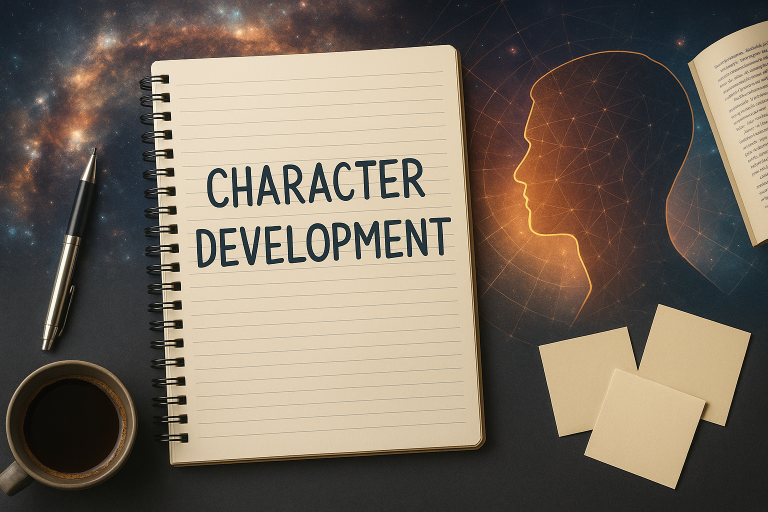
Developing Complex Characters can be fun, but definitely requires some thought. When writing sci-fi or fantasy, it’s easy to become consumed by the world-building—the rules of magic, the multiverse mechanics, or the technological systems that drive your plot. But no matter how intricate or imaginative your setting, readers will only care if they’re emotionally invested in the characters.
In Echoes of Elsewhere, I created alternate realities, nonlinear timelines, and a realm that exists between worlds. But the heart of the story was always Sarah Evans—a flawed, emotionally driven young woman navigating all of it. Without characters like Sarah, the complexity of the world wouldn’t matter. Here’s a breakdown of how I approach character development in speculative fiction:
Start with an Emotional Core
Before thinking about powers, roles, or world mechanics, I begin by asking:
What does this character fear?
What do they want most—and why can’t they have it?
What emotional wound are they carrying?
In speculative fiction, characters often face external chaos. The emotional core is the anchor that keeps them grounded—and relatable. For Sarah, the story didn’t begin with her ability to stabilize fractured realities. It started with grief, confusion, and the search for belonging. Those feelings shaped her choices more than her powers did..
Design the World Around the Character (and Vice Versa)
Great speculative fiction doesn’t just place characters in the world—it lets the world shape them. Ask yourself:
How has this world changed your character?
What beliefs or behaviors are a direct result of living in this reality?
How do their personal values conflict with the world around them?
In Echoes of Elsewhere, Sarah’s emotional stability affects her ability to move between realities. The world is literally a reflection of her internal state. This approach created both high stakes and personal consequences, tying the plot to character development in a meaningful way.
Use Mirrors and Foils to Explore Growth
In speculative fiction, you have the unique opportunity to introduce alternate versions of your characters or use other characters as emotional mirrors. I often ask:
What would this character look like if they made a different choice?
What version of them exists in a parallel world—and what do they fear seeing in that reflection?
These alternate selves aren’t just cool narrative devices—they’re emotional confrontations. In Sarah’s case, meeting other versions of herself raised difficult questions about identity, regret, and destiny. That internal tension made her arc richer and more dynamic.
Avoid the “Chosen One” Shortcut
Characters with special roles or powers are common in sci-fi and fantasy—but avoid relying too heavily on destiny or prophecy to drive motivation. Instead:
Let your characters struggle.
Give them real agency.
Make their choices shape the story.
Even if your character has a rare gift, it shouldn’t define their value. Sarah is an Anchor, yes—but that ability comes with emotional cost, uncertainty, and the constant burden of holding collapsing realities together. The more grounded her challenges, the more readers connected with her.
Make Growth Nonlinear and Honest
Too many character arcs in speculative fiction follow a perfect upward slope. Real growth is messier. It involves:
Backsliding after progress.
Doubting your choices.
Breaking before rebuilding.
Let your characters fail. Let them hurt the people they love. Let them carry emotional consequences through the story. That’s what makes them feel human—even if the world they live in is anything but.
Final Thoughts
If you’re writing speculative fiction, always remember: readers might come for the world-building, but they stay for the characters. Your setting can bend the rules of time, reality, or physics—but the emotional truth of your characters must remain intact.
In Echoes of Elsewhere, Sarah’s journey across fractured realities meant nothing without the emotional thread that carried her through. By grounding her in fear, memory, hope, and identity, I made sure the sci-fi stayed personal—and that every extraordinary event still felt human.
If you’re working on a sci-fi or fantasy novel, start with the why behind your character—not just what they can do, but who they are when everything else falls away. That’s where your real story begins.
